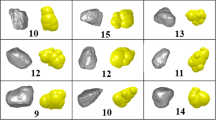Abstract
This paper, respectively, considers the nonlinear contact and Coulomb friction between rollers and rails, the characteristics of a hydraulic cylinder, and the contact characteristics between sleepers and ballast. The models of hydraulic cylinders are employed to realize the characteristics of hydraulic circuits and clamping forces. And the effects of the Coulomb friction between the track roller and the rail are simulated by calling the Boolean operation in the bond graph simulation software 20-sim. Based on the above analyses, this paper explores deeply which effect the pressures in the hydraulic cylinders and the hydraulic resistances of the flow passes at the inlets and outlets of the hydraulic cylinders will have on roller–rail contacts and working effects. As a result, the increase in pressure of the hydraulic cylinder will stabilize the roller–rail contact and improve the energy transmission efficiency. The increase in the hydraulic resistance value can enhance the working effect to some extent. With regard to the friction, there are four forms of frictional contact between the roller and the rail.


















Similar content being viewed by others
References
Bixian, M.: Dynamic track stabilizer. China Railway Publishing House, Beijing (2008)
Shichang, H., Yayu, H., Bin, H.: A new type of stabilizing device for a dynamic track stabilizer based on virtual prototype technology. J. Vib. Shock 35(21), 214–219 (2016)
Wang, L.H., Liu, G.W., Huang, Y.Y.: Research on the dynamic characteristic of the bogie in dynamic track stabilizer on working conditions. Adv. Mater. Res. 605–607, 1270–1273 (2014)
Baliño, J.L.: Galerkin finite element method for incompressible thermofluid flows framed within the bond graph theory. Simul. Model. Pract. Theory 17(1), 35–49 (2009). https://doi.org/10.1016/j.simpat.2007.11.002
Banerjee, N., Karmakar, R.: Bond graph modeling of rail wheelset on curved track. Simulation 83(10), 695–706 (2016). https://doi.org/10.1177/0037549707084489
Borutzky, W.: Bond graph methodology: development and analysis of multidisciplinary dynamic system models. Springer, London (2010)
Md, L., Kd, C.: Bond graphs for flexible multibody systems. Trans. ASME Ser. G 101(2), 50–56 (1979)
Jahanbin, Z., Karimian, S.: Modeling and parametric study of a flexible flapping-wing MAV using the bond graph approach. J. Braz. Soc. Mech. Sci. Eng. 40(2), 96 (2018). https://doi.org/10.1007/s40430-018-1002-2
Montazeri-Gh, M., Fashandi, S.A.M.: Bond graph modeling of a jet engine with electric starter. Proc. Inst. Mech. Eng. G J. Aerosp. Eng. 233(9), 3193–3210 (2018). https://doi.org/10.1177/0954410018793772
Fan, X., Fang, M., He, Y., Song, T.: Modeling and dynamic analysis of a pilot-operated pressure-regulating solenoid valve used in automatic transmission with bond graphs. J. Braz. Soc. Mech. Sci. Eng. (2019). https://doi.org/10.1007/s40430-019-1875-8
Singh, R., Bera, T.K.: Bond graph approach for dynamic modelling of the biped robot and application to obstacle avoidance. J. Braz. Soc. Mech. Sci. Eng. (2019). https://doi.org/10.1007/s40430-019-1957-7
Narwal, A.K., Vaz, A., Gupta, K.D.: Study of dynamics of soft contact rolling using multibond graph approach. Mech. Mach. Theory 75, 79–96 (2014). https://doi.org/10.1016/j.mechmachtheory.2014.01.004
Bo, Y.: Research on dynamic mechanical characteristics in the operating process of dynamic track stabilizer. Kunming University of Science and Technology, Docter (2017)
Chen G, Zhai WM (2004) A new wheel/rail spatially dynamic coupling model and its verification. Vehicle Syst Dyn 41 (4)
Acknowledgements
This study was financially supported by the projects of National Natural Science Foundation of China (51765023).
Author information
Authors and Affiliations
Corresponding author
Ethics declarations
Conflict of interest
On behalf of all authors, the corresponding author states that there is no conflict of interest.
Additional information
Publisher's Note
Springer Nature remains neutral with regard to jurisdictional claims in published maps and institutional affiliations.
Rights and permissions
About this article
Cite this article
Li, J., Wang, L. & Yan, B. Modeling and dynamic analysis of the dynamic stabilization unit based on bond graph. Arch Appl Mech 91, 2681–2695 (2021). https://doi.org/10.1007/s00419-021-01914-4
Received:
Accepted:
Published:
Issue Date:
DOI: https://doi.org/10.1007/s00419-021-01914-4




